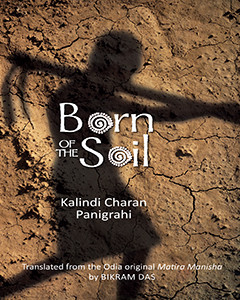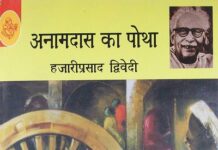
This year I want to make a conscious effort to read a bit more regional Indian literature, a bit more Hindi literature. I was happy when this Odia book written in 1934 came to me for review. It has recently been translated into English. The Odia title ‘Matira Manisha’ was written by Kalindi Charan Panigrahi and the version I read Born of the Soil, has been translated by Bikram Das.
Set in a small village in Odisha in early 20th century, the book Born of the Soil is as rooted in Odia culture as it can be. It is the story of a family living in a village called Padhanpada – probably not too far from Cuttack. The simple villagers spend their time toiling with the land and they live off whatever they produce.
The family saga of the protagonist looks like the one from which today’s TV serials are inspired. It has a head who is respected in the village, known for his honesty and ethics. There are two sisters-in-laws who cannot see each other eye to eye, but given the circumstances, they must stay in the same house. One has 4 children and the other has none. The brothers get entangled in the fights but each takes a very different stand. One wants to divide the house and property and go independent. The other wants to keep the house and property together even if it means that one of them has to sacrifice everything to keep that word.
You clearly see the story of Ramayana as an inspiration for the author. There is am an emphasis on keeping the father’s last word, even at the cost of torturing oneself or one’s family. Elder brother is a personification of Ram while his wife is a very reluctant Sita. The steadfast resolve to keep the word is what always reminds one of Ramayana.
Apart from the family dispute, there is a depiction of social relationships within the village. The problems and issues are resolved within the community. Police exist but people do not necessarily go to them. There are moneyed people who are always looking out for taking over lands of farmers. They do whatever it needs to be done to achieve their goals – saam, daam, dand, bhed. You see the relationship of a family vis-a-vis the rest of the village. However, the biggest relationship that comes out in the story is that of a farmer with his land. The land that he tills, the land that produces a crop for him and land that runs his kitchen. It is the strongest relationship in his life and a relationship above every other relationship.
If a farmer is willingly giving up his land – you can imagine how big a decision it would be for him.
It is a short story, a novella by Kalindi Charan Panigrahi. It mirrors the times it is written in – a time when India was still an agrarian society. That was a time when farmers worked hard but they had enough to feed their families. One big observation I had from this book was there was no mention of British Raj, though in early 20th CE it was at its peak. There is no mention any kings or administrators. It seems as if the village is a universe of its own, though there is a mention of going to Cuttack and Calcutta.
Born of the Soil Translator Bikram Das has tried to keep the ethos of the language by keeping a lot of Odia words as used by Kalindi Charan Panigrahi. This makes the glossary quite a place to reference. However, if you know a few Indian languages you can make out most of the words. And appreciate them more in Odia than they would have been in English. A native word has so many nuances that a translation can never carry. Having said that, I would have loved to read this book in Hindi. I am sure no nuances would have been lost as the cultures across India are not very different. I could see Hindi equivalents of so many proverbs translated into English in this book.
It is a simple story, set in a simple village in the times that were definitely much simpler.
Read it.









This sounds like a great read. Thanks for drawing my attention to a book that promises to be fabulous.
You are most welcome Kalpanaa.